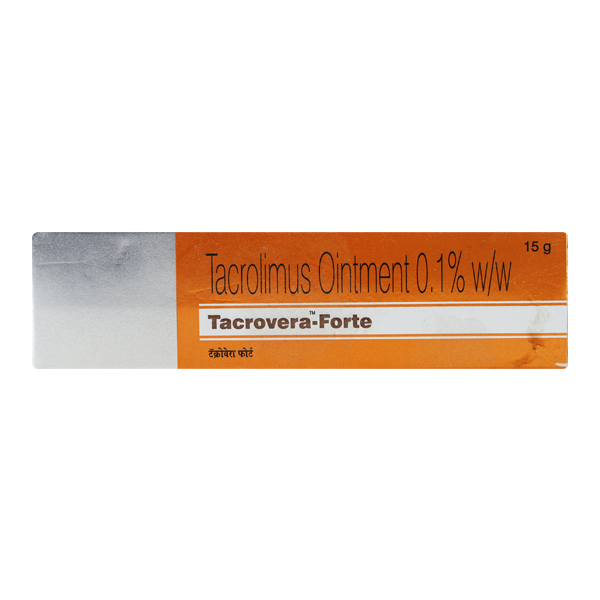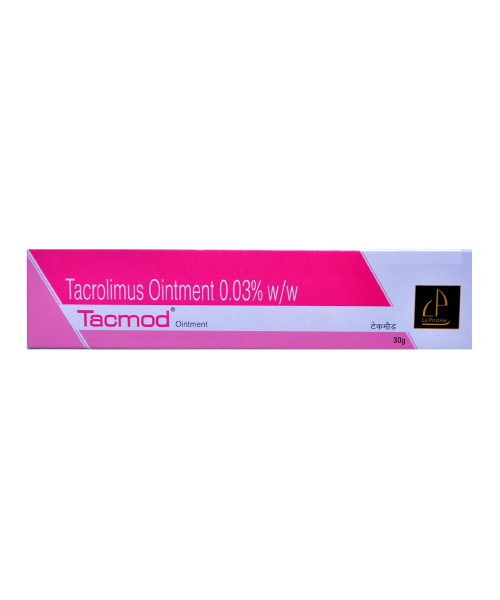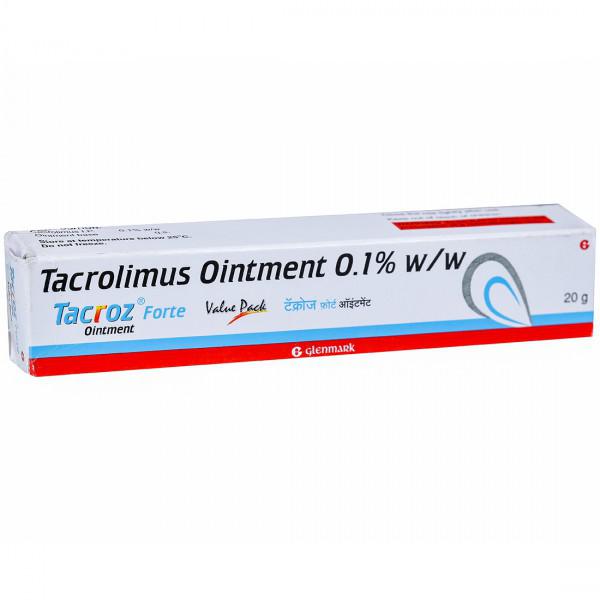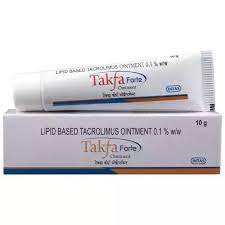Tacrolimus
Atopic Dermatitis, Graft vs Host Disease
DRUG STATUS

Approvals
UK(BNF)

Essential Medicine
YES

Teratogenicity
N/A

Pharmaceutical Class
Calcineurin Inhibitor Immunosuppressant

Tacrolimus
Know More About This Medicine -
Click HereSummary
Tacrolimus is primarily used to prevent organ rejection after a transplant, such as a kidney transplant. It works by suppressing the immune system to prevent it from attacking the transplanted organ.
Tacrolimus binds to a protein called FKBP12 in your body. This forms a complex that inhibits an enzyme known as calcineurin, which is crucial for activating T-cells. By doing this, it reduces the production of inflammatory cytokines, preventing immune system attacks on transplanted organs.
Tacrolimus is typically taken as an extended-release capsule every morning at the same time, ideally on an empty stomach. The exact dosage depends on your weight and medical condition, and is determined by your doctor.
Common side effects of Tacrolimus include diarrhea, nausea, and tremors. It may also cause headaches, dizziness, and changes in appetite or mood. Less commonly, it can cause neurological effects like confusion or tremors.
Tacrolimus should not be taken if you're allergic or have had a liver transplant without consulting your doctor. It can cause serious side effects like high blood pressure, high blood sugar, kidney issues, and blood clots. It may also increase your risk of getting cancer and infections. It's crucial to avoid grapefruit and alcohol while taking this medication.
Indications and Purpose
What is Tacrolimus used for?
Tacrolimus is a drug that helps prevent the body from rejecting a new kidney after a transplant. It's only for adults who've had a kidney transplant and must be used with other medications. It hasn't been tested on children, so it's not safe or effective for them.
How does Tacrolimus work?
Tacrolimus binds to FKBP-12, forming a complex that inhibits calcineurin, an enzyme critical for activating T-cells. This reduces the production of inflammatory cytokines, preventing immune system attacks on transplanted organs.
Is Tacrolimus effective?
Clinical trials have shown tacrolimus to be effective in reducing the incidence of organ rejection. When taken as directed, it significantly improves transplant outcomes compared to alternatives.
How does one know if Tacrolimus is working?
Effectiveness is monitored through blood tests measuring tacrolimus levels, kidney function tests, and clinical observation for signs of organ rejection
Directions for Use
What is the usual dose of Tacrolimus?
After a kidney transplant, adults usually start taking a medicine called tacrolimus (an extended-release capsule). The doctor will figure out the right dose based on your weight, aiming for a certain amount of the medicine in your blood. This medicine is taken with other medicines to help prevent your body from rejecting the new kidney. The amount of tacrolimus in your blood will be checked regularly, and your dose will be adjusted as needed to keep it within the safe range. This ensures the new kidney is protected, and the medicine works as it should.
How do I take Tacrolimus?
Take your tacrolimus capsules whole, every morning at the same time. It's best to take them on an empty stomach, either an hour before or two hours after eating. Don't eat grapefruit or drink grapefruit juice while taking this medicine.
For how long do I take Tacrolimus?
Tacrolimus is typically taken long-term or indefinitely in transplant patients to prevent organ rejection. The exact duration depends on your medical condition and response to treatment, as determined by your doctor.
How long does it take for Tacrolimus to start working?
Tacrolimus typically starts working within 1 to 3 days, as it quickly suppresses the immune response. However, the full therapeutic effect, particularly in conditions like organ transplantation or autoimmune diseases, may take 1 to 2 weeks or longer to become evident. Regular blood level monitoring ensures the drug reaches its effective concentration.
How should I store Tacrolimus?
Keep the medicine at room temperature (around 77°F or 25°C). It's okay if the temperature goes a little higher or lower, between 59°F (15°C) and 86°F (30°C). The medicine comes in a box with 5 strips of 10 capsules each, all in foil.
Warnings and Precautions
Who should avoid taking Tacrolimus?
Tacrolimus extended-release capsules can have serious side effects, like a higher chance of getting cancer, infections, kidney or nervous system issues, high blood pressure, and blood clots. It can also raise your blood sugar and potassium levels. Don't take it if you're allergic or have had a liver transplant without talking to your doctor first. Tell your doctor about any liver, kidney, or heart problems you already have. If you could get pregnant, use birth control.
Can I take Tacrolimus with other prescription drugs?
Tacrolimus extended-release capsules interact with many things, so it's crucial to tell your doctor about *everything* you take—prescription drugs, over-the-counter meds, vitamins, supplements, and even alcohol. Some things can change how much tacrolimus is in your blood, possibly needing a dose change. Avoid grapefruit and grapefruit juice. Taking it with certain other drugs (like sirolimus or everolimus) raises your risk of blood clots.
Can I take Tacrolimus with vitamins or supplements?
Tacrolimus may interact with supplements, especially those containing magnesium or aluminum, which can affect its absorption. Always consult your doctor before starting any new vitamins or supplements.
Can Tacrolimus be taken safely while pregnant?
Tacrolimus is a medicine that can hurt an unborn baby. Studies show it may lead to premature birth, birth defects, low birth weight, and problems for the baby during pregnancy.
Can Tacrolimus be taken safely while breastfeeding?
Tacrolimus extended-release capsules and Envarsus XR are medicines that can get into breast milk. You and your doctor need to talk about whether breastfeeding is safe for your baby while you're taking these medications. You'll need to weigh the good things about breastfeeding for your baby against any possible bad effects the medicine might have on them.
Is Tacrolimus safe for the elderly?
Older adults often need lower doses of medicine than younger people. This is because their livers, kidneys, and hearts may not work as well, and they might be taking other medications. Doctors don't have a lot of research on how medicines work in older people, so they start with a low dose to be safe.
Is it safe to exercise while taking Tacrolimus?
Exercise is safe, but avoid overexertion, especially if experiencing tremors, fatigue, or dizziness. Stay hydrated and consult your doctor
Is it safe to drink alcohol while taking Tacrolimus?
Tacrolimus is a strong medicine. Alcohol can make it harder for your body to use tacrolimus correctly, or it can make the medicine less effective. This could mean your treatment doesn't work as well as it should. It's best to avoid alcohol completely while you're taking this medicine.






.svg)





